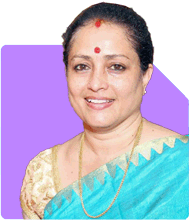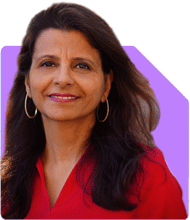present age 45 Year
Like to retire in 2036
Family members : wife and 14year old son
Having following assets:
One home of 65 L
PPF of 26L (will continue investment till 2036)
Gold 20 L in gold (coins and SGB)
Plots INR 14 lakh (4500sqft)
Equit 6 lakh in equity (adding 10000 monthly till 2036)
NPS 2.5 lakh (will add 50K annually till 2036)
Sip in ETFs present 7.2 lakh invested in ETFs and will continue investing 50K monthly till 2036
Nippon Nifty BeES, ICICI Prudential Nifty Next 50, Motilal Oswal Nasdaq 100, Motilal Oswal Midcap 150, ICICI Nifty India Consumption ETF, SBI PSU Bank ETF, and ICICI Infra ETF,
with a 10% annual step-up.
Our current monthly household expenses are around INR 40,000
Having 50L term insurance and 5L group medical insurance for family
Ans: You have built a very structured and balanced portfolio. Your commitment to disciplined investing deserves appreciation. You are consistently investing across asset classes with a long-term view. That gives you a strong foundation for financial freedom in 2036.
Now, let’s analyse each component step by step.
Let us create a 360-degree plan to improve safety, growth, and retirement readiness.
? Home Property Assessment
– Your house worth Rs. 65 lakh is a consumption asset.
– It provides stability but doesn’t generate income.
– Don’t treat it as a retirement asset.
– It should not be part of your retirement corpus plan.
– Ensure proper insurance for the house.
– That protects from damage and liability.
? PPF Contributions Till 2036
– Your PPF corpus of Rs. 26 lakh is a strong pillar.
– Continued contributions till 2036 is wise.
– It gives assured, tax-free returns.
– It also gives liquidity after maturity.
– Use this corpus as a cushion post-retirement.
– Use it only for unavoidable or health-related needs.
– Keep it intact for longer to earn interest.
– Don’t withdraw unless necessary.
? Gold Holdings – Coins and SGBs
– Rs. 20 lakh in gold is a sizable holding.
– If mostly SGB, it is earning interest.
– If mostly coins, it does not earn anything.
– Keep SGBs till maturity for 2.5% annual interest.
– Do not increase allocation further to gold.
– It is not productive and fluctuates.
– No inflation-beating power over 15 years.
– Cap gold at around 10–15% of total assets.
– Avoid more gold investments going forward.
? Plot Worth Rs. 14 Lakh
– This is not a retirement-ready asset.
– Plots do not give regular income.
– It needs time to sell and legal clarity.
– Future sale value is uncertain.
– Consider selling in future and shifting to mutual funds.
– That will make your money work.
– Don’t count this plot in your retirement corpus.
? Equity Mutual Fund Investment
– Rs. 6 lakh equity investment with Rs. 10,000 monthly SIP is a good approach.
– Keep this SIP running consistently till 2036.
– This investment will grow well over time.
– Ensure allocation is spread across large, mid, and flexi-cap funds.
– Actively managed funds do better than ETFs long term.
– They adjust based on market trends.
– Choose regular funds through an MFD guided by a Certified Financial Planner.
– Avoid direct mutual funds.
– Direct funds don’t give personalised service or portfolio reviews.
– Regular funds offer advice and handholding from experts.
? NPS Annual Investment
– You have Rs. 2.5 lakh in NPS.
– You are adding Rs. 50,000 annually.
– This is tax-efficient.
– But 60% maturity proceeds are taxable.
– And 40% goes into annuity which gives low returns.
– NPS is locked till 60.
– Keep your contribution limited.
– Don't use NPS as your main retirement plan.
– Use it only as a small portion of your retirement asset mix.
? Current ETF Investments – Areas of Concern
– You have invested Rs. 7.2 lakh in ETFs.
– Investing Rs. 50,000 monthly in ETFs with a 10% step-up sounds aggressive.
– These include Nifty, Next 50, Midcap, Nasdaq 100, Infra, PSU Bank, Consumption.
– Many are high-risk sector-specific ETFs.
– This exposes you to concentration risk.
– ETFs don't have fund managers who adjust holdings.
– They mirror index, even if stocks underperform.
– In falling markets, ETFs fall fully.
– No cushion or downside protection.
– In long term, actively managed mutual funds have better performance.
– They manage market conditions better.
– Fund managers book profits, rebalance sectors.
– ETFs lack this human advantage.
– You are also missing asset allocation flexibility.
– Consider shifting to regular mutual funds.
– Choose diversified equity funds with a professional planner.
– Reduce reliance on index investing.
? Insurance Coverage – Needs Reassessment
– You have a Rs. 50 lakh term cover.
– You have Rs. 5 lakh group medical cover for family.
– This is not enough.
– At your stage, Rs. 1.5 crore term cover is ideal.
– It should cover 10 to 12 times your annual income.
– Group health insurance is not portable.
– It ends when you leave your job.
– Buy a personal floater health policy for family.
– At least Rs. 15 lakh cover with Rs. 5 lakh top-up.
– That protects your savings in medical emergencies.
– Don’t ignore insurance gaps.
? Monthly Expenses and Retirement Corpus
– Your current household expense is Rs. 40,000.
– In 11 years, it can double with inflation.
– After retirement, you need income for at least 25 years.
– You will need Rs. 1 crore to Rs. 1.5 crore at retirement.
– This depends on inflation and lifestyle.
– Your current SIPs, PPF, equity MF, and gold can help.
– But ETF-heavy portfolio is risky for retirement.
– Mutual funds with rebalancing and planning are more suitable.
– Retirement should not depend on market-linked passive funds.
– Safety and predictability matter more after retirement.
? Key Actionable Steps
– Stop further gold and ETF investments.
– Sell the plot after proper evaluation and reinvest in mutual funds.
– Increase term insurance cover to at least Rs. 1.5 crore.
– Start a separate family health insurance plan of Rs. 15–20 lakh.
– Reduce NPS contribution and don’t treat it as your core plan.
– Shift your ETF SIPs gradually to actively managed mutual funds.
– Use regular funds through a certified MFD with guidance from a Certified Financial Planner.
– Stay invested consistently in equity mutual funds.
– Use multi-cap, flexi-cap, and hybrid funds for balance.
– Review asset allocation every year.
– Keep PPF till 2036, but don’t rely on it for regular income.
– Treat gold as safety buffer, not growth engine.
– Plan income withdrawal post-retirement carefully.
– Don’t withdraw all equity at once after retirement.
– Use Systematic Withdrawal Plan (SWP) from mutual funds.
– That helps you get monthly income with less tax.
– Plan one-time expenses like son’s education separately.
– Keep some money in liquid funds from age 55.
– Create a retirement bucket strategy – safety, moderate, and growth buckets.
? Final Insights
– You are already disciplined and structured.
– That gives you a great head start.
– But, ETFs and plots are not suitable for retirement income.
– Actively managed regular funds offer better control and stability.
– Medical emergencies can destroy savings.
– Don’t wait to fix health and term insurance.
– Reduce exposure to passive and risky assets.
– Build a mutual fund-based plan with periodic review.
– Secure your family first, then focus on wealth.
– Don’t chase returns alone.
– Plan safety, growth, and income together.
– Use a Certified Financial Planner to customise the plan.
– With right steps, your 2036 retirement is absolutely achievable.
– Retirement is not a finish line.
– It is a new beginning.
– Plan it like a second life, not an ending.
Best Regards,
K. Ramalingam, MBA, CFP,
Chief Financial Planner,
www.holisticinvestment.in
https://www.youtube.com/@HolisticInvestment





















